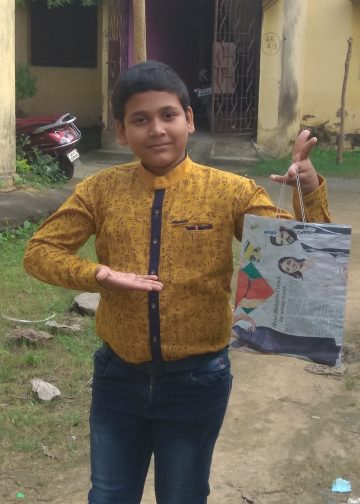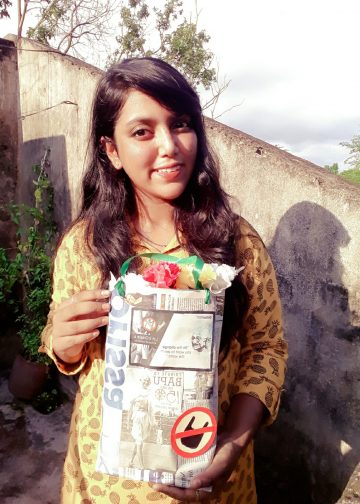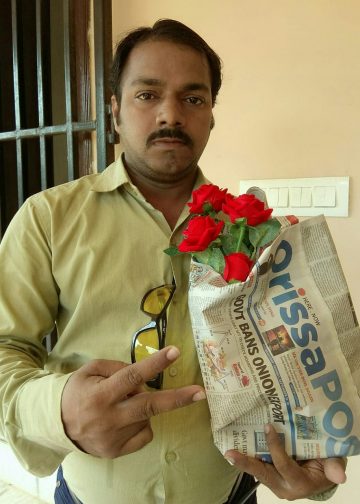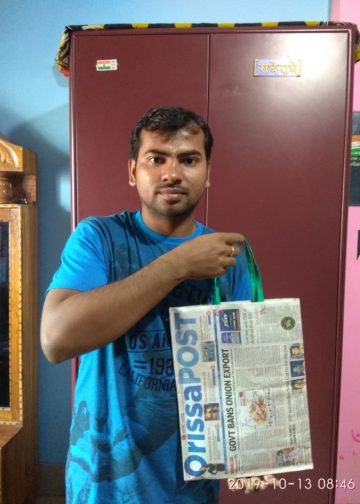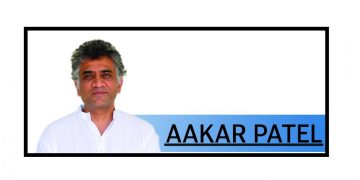Rashmi Rekha Das
Uttareswar temple at Chaudwar, the abode of Lord Shiva, is guarded by a King Cobra. The serpent appears during the puja every day and disappears soon after the
rituals end. However, the 11th century shrine still lies in a state of disrepair. A
reality-check by Sunday Post
Many ancient shrines that dot the length and breadth of Orissa are structures steeped in heritage that epitomise the opulent religious and cultural traditions of the state. The extraordinary marvels etched on temple walls are a sight to behold; they are ancient examples of architectural splendour, the grandeur of which leave even modern architects spellbound. The intermeshing of artistic, spiritual and cultural heritage is manifest in the temples and other places of worship in the state that draw eager visitors from around the world. However, Oriyas are yet to fully explore the religious and artistic traditions of the state and many a secluded shrine remains locked in a lonely nook waiting to be explored.
If you happen to get an unexpected breather in the form of a holiday this scorching summer, and if you are planning a visit to a religious shrine, look no further than Cuttack district which houses a number of tourist destinations including the Uttareswar temple. Despite being a small temple, Uttareswar has a fascinating and panoramic past blended in rich cultural tradition.
We know that Lord Shiva and snakes share a curious connection. In almost all depictions of the Lord, there is always a serpent seen around his neck. Along with his trident and ‘damru’, the serpent is a constant companion of Lord Shiva. It is supposed to be the King of Serpents – Vasuki. What is fascinating about Uttareswar temple is that it is guarded by a King Cobra which appears every day during puja. Sunday POST visits the shrine and documents the many miracles that folklore associates with the temple as well as the near-total absence of renovation efforts to restore the heritage structure.
According to temple priest Bijay Kumar Panda, popularly known as Bidya Nana, it is widely known that cobras inhabit Shaivite pilgrimage spots. Though the serpent is very much present in the shrine, no one has yet suffered snakebite.
“People come here to get their wishes fulfilled. Those finding it difficult to get married or couples who are issueless pray at the shrine for the fulfillment of their wishes and make offerings at the temple. Most importantly, the temple is famous for having 8 ‘lingas’ – Kapaleswar, Uttareswar, Budha Linga, Jatteswar, Chateswar, Balunkeswar, Bateswar and Maninageswar.
Asked if he was scared of the serpent while performing the daily puja and other rituals at the temple, Panda said: “Snakes have been a part of worship in Hinduism from the very beginning. The most famous myth of Lord Shiva’s association with snakes is when he drinks the poison from snake Vasuki’s mouth during the churning of the ocean to get ‘amrit’. From that day, Lord Shiva became blue-throated and came to be known as Nilakantha.
Lord Shiva, also known as Pasupathinath, is the Lord of all creatures. The Lord of all animals has complete control over their behaviour. The snake stands for all the evil and demonical aspects of the world. By wearing the snake around his neck, Lord Shiva gives us assurance that no evil can touch us or destroy us once we surrender to Him, seek His protection and worship Him with deep devotion. The snake also stands for all passions and desires. By wearing the snake around his neck, Lord Shiva conveys the message to all His devotees that He has overcome all desires and is in full control of ‘prakruti’, or ‘maya’, and its various machinations. Besides, Shiva’s neck represents the endless cycle of birth and regeneration. Snakes are Lord Shiva’s necklace, armlets and also appear in His clothes. They also serve as his bowstring. Legend has it that all the snakes found on Lord Shiva’s body became ornaments during his marriage with Parvati. It is also said that Shiva made ornaments out of poisonous snakes and gave it to Pravati as gifts.”
“The snake appears when I perform the puja every day. It disappears soon after puja ends. It moves around the statue of the holy buffalo, or ‘brusha’, as I offer puja. This has been an everyday occurrence for years. Though we get scared sometimes due to the serpent’s existence in our midst, no priest or visitor has ever been harmed by it. I always follow the snake to know its whereabouts. But it disappears soon after the puja ends,” said Panda.
Dwelling on his spiritual communion with the God, the priest said: “Once I shouted at the God in a fit of frenzy because a family dispute had erupted which was disturbing me a lot. I cried inconsolably. After a few minutes, a person wearing a dhoti and ‘gamuchha’ appeared and asked for food. After having his fill, he gave me Rs 21 and left. I could not find him when I followed him to know his name. Interestingly, when I returned home all the problems had been resolved. I have never come across that person. I believe he is the God Himself. That apart, a bell weighing 5 kg fell on me when I was performing rituals at Uttareswar temple on the occasion of Jagara. To my surprise, I escaped unhurt. However, my firm belief is that because I failed to tie the flag atop the shrine – as per custom – the untoward incident took place. These incidents reflected God’s miracle and His blessings on me.”
The 11th century temple has a chequered history. “The shrine was built several centuries ago in the Dwapar yuga. It was built by King Birat for his daughter Uttara and was named after her. The temple was in a bad shape, lying in a dilapidated state till 2002. Thanks to the ASI’s efforts, the structure was subsequently renovated and restored. The construction of the boundary wall was undertaken after the government allotted Rs 50 lakh 2 years back. Though we have demanded a tourist spot status for the temple, the government is yet to consider it. Minister Debi Prasad Mishra during his visit here had assured that the place would secure a tourist spot tag soon.
Another priest Mrutyunjay Baral said, “The temple needs a complete overhaul to attract tourists. The temple pond, ‘yagya kunda’ and other monuments are lying in a state of disrepair. To increase tourist footfall, the government should accord a tourist spot status to the place. Foreign visitors are not even aware of the temple. People of neighbouring districts like Khurda, Kendrapara and Jajpur visit the place. The ‘yagya kunda’ and the pond present an overall picture of neglect. They need urgent restoration. Drinking water is also not available due to which local tourists face problems. We need halogen lights because of poor lighting facility. A kitchen should be built so that devotees can enjoy the prasad.”
“Except the skeletal structure the temple compound doesn’t house other adjoining dwellings. Of the four doors two are in a state of neglect. Once the local legislator had given Rs 2 lakh for renovation. Of late, the temple has not received any grant,” Baral lamented.
Jagara, Kartika Purnima and Dola Purnima are important festivals celebrated at the temple. ‘Khechudi’ is offered to the God every day. ‘Bimanas’ are brought from Choudwar, Kailash Mandap, Debi Nagar, Banipada, Mangrajpur, Fakirpur and other places for the purpose of carrying out processions. The first ‘yagya’ was held at the temple in 1958 by ASI official Prafulla Mishra.
Situated near Agra haat, the temple is 3 km away from Chaudwar. Visitors can reach Cuttack by train or bus before heading towards the site.


















